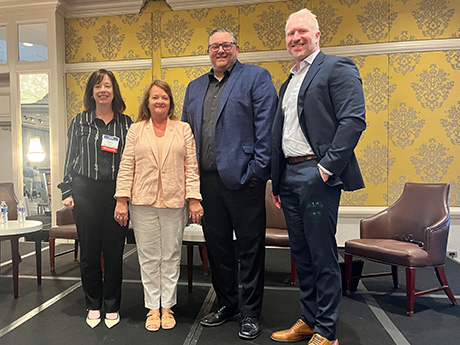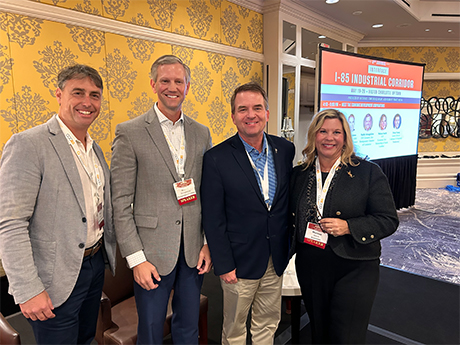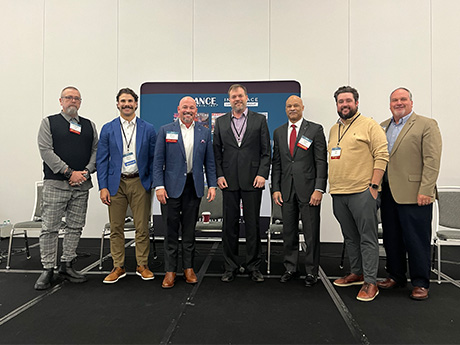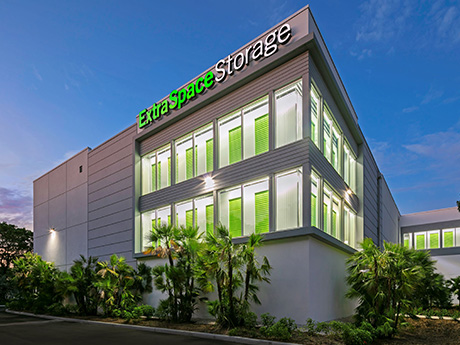By Brett Reese of CP Group After several years of disruption, the office market is beginning to show meaningful signs of recovery. Market fundamentals are strengthening, sentiment is shifting and the data backs it up. Office sales totaled $64.3 billion last year, up nearly 21 percent from 2023, according to MSCI Real Assets. Net absorption also turned positive, with 6.5 million more square feet of U.S. office space leased than vacated, marking the most substantial annual gains since 2019. Rent growth has been substantial across key markets, lenders are re-engaging and marquee transactions are driving capital back to the sector. These are the first broad signs that the innovative strategies employed by experienced owners and operators over the past five years are beginning to pay off. Sun Belt momentum In Southeastern markets like South Florida and Atlanta, recovery outpaces national trends, driven by location, flexibility and amenitized space. Hard-learned lessons by tenants, lenders and landlords have reshaped the market. As the industry recalibrates, operators with conviction and capital can double down on what’s working. Debt is returning Perhaps the most significant harbinger of market recovery is the thawing of the debt markets. Just a year ago, lenders willing to underwrite …
Features
InterFace Panel: Multifamily Operators Are Utilizing Fee Transparency, Concessions to Woo Renters
by John Nelson
CHARLOTTE, N.C. — The federal government has been cracking down on price gouging in recent months. Last month, the Federal Trade Commission (FTC) implemented a rule to ban “junk fees” from live event platforms like Ticketmaster, as well as hotels and other short-term lodging. This rule precludes the vendor or property owner/management firm from being able to charge hidden fees on the back end by requiring them to put the total cost upfront, inclusive of all mandatory fees and charges. And in January, the U.S. Justice Department (DOJ), along with 10 state attorneys general, followed up on its 2023 antitrust lawsuit with RealPage by adding six of the nation’s largest property managers to the lawsuit. Editor’s note: InterFace Conference Group, a division of France Media Inc., produces networking and educational conferences for commercial real estate executives. To sign up for email announcements about specific events, visit www.interfaceconferencegroup.com/subscribe. The amended complaint alleges that the companies — Greystar; Blackstone’s LivCor LLC; Camden Property Trust; Cushman & Wakefield Inc. (formerly operating independently as Pinnacle); Willow Bridge Property Co. (formerly Lincoln Residential); and Cortland Management LLC (Cortland) — used RealPage’s pricing algorithms via the company’s YieldStar platform to share sensitive data and coordinate pricing strategies, …
By Hayden Spiess DALLAS — Although tenant demand for active adult communities remains strong, the sector is not immune to escalating construction costs, labor shortages, tariffs and general economic uncertainty, say industry professionals. Teamwork across key disciplines can help make clearing those hurdles much easier. “We’re having a hard time getting things to pencil these days,” levels Erin Berry Harps, director of interior design at Direct Supply Aptura, a senior living design and construction firm. Simultaneously, residents are as price conscious as ever, she points out. “We also have increased consumer demand for affordability,” emphasizes Harps. Editor’s note: InterFace Conference Group, a division of France Media Inc., produces networking and educational conferences for commercial real estate executives. To sign up for email announcements about specific events, visit www.interfaceconferencegroup.com/subscribe. Harps’ assessment came during the 5th annual InterFace Active Adult conference, which was held Wednesday, May 7, at The Westin Las Colinas in Dallas. Harps moderated a panel titled “Architecture, Design & Construction Trends for Active Adult Projects” at the daylong event, which attracted more than 300 industry professionals. In addition to Harps, the panel discussion included Bill Foster, a partner with Lantz-Boggio Architects; Lisa Warnock, principal and founder of Glow Interior Designs; Jarrett Cooper, vice …
InterFace: Today’s Successful Student Housing Developments Pair Great Site Selection with Efficient Design
by John Nelson
AUSTIN, TEXAS — It’s no secret that finding and entitling sites and procuring development financing has been challenging over the past few years. But Kevin Kazlow, director of capital markets with JLL, who moderated one of the development panels at this year’s InterFace Student Housing conference in Austin, Texas, believes there is lots to be excited about for the year ahead. Chief among them is the fact that the amount of capital allocated to alternative asset classes like student housing has doubled since 2018. “This group of panelists alone has a combined pipeline of about 40,000 beds under development, which is an incredibly impressive statistic and speaks to the continued demand for new student housing projects,” said Kazlow. Editor’s note: InterFace Conference Group, a division of France Media Inc., produces networking and educational conferences for commercial real estate executives. To sign up for email announcements about specific events, visit www.interfaceconferencegroup.com/subscribe. The first step in the development process is securing a great site, which Brandt Stiles, principal with Subtext, considers part of his firm’s ‘secret sauce.’ “We have a really high expectation for our team to find super high barrier to entry, hard to entitle, fortress sites and for us, it’s all about being …
Tariffs Make ‘Challenging Deals Even More Challenging’ for Economic Development Officials, Says InterFace Panel
by John Nelson
CHARLOTTE, N.C. — Tariffs are at the forefront of the U.S. economic landscape as they impact costs and timelines for a multitude of industries. For the industrial real estate sector, developers and tenants alike are monitoring the severity at which tariffs can complicate their everyday business activity, thus economic development officials are playing a crucial role in helping companies mitigate those costs and delays. “A lot of our business comes down to reducing risks for companies,” said Melissa Smith, senior vice president of the Economic Development Partnership of North Carolina. “There’s a lot of scrambling due to tariffs. They make already challenging deals even more challenging. We have to be ready to help [companies] navigate through these challenges so that they can make a successful decision.” Editor’s note: InterFace Conference Group, a division of France Media Inc., produces networking and educational conferences for commercial real estate executives. To sign up for email announcements about specific events, visit www.interfaceconferencegroup.com/subscribe. Smith’s comments came on the opening night of InterFace I-85 Industrial Corridor, a two-day networking and information event held at the Hilton Charlotte Uptown hotel on May 19-20. Brian Young, senior director of Cushman & Wakefield’s Greenville office, moderated the discussion called …
Competition for Labor, Land Is Reshaping the I-85 Industrial Corridor, According to InterFace Panelists
by Abby Cox
CHARLOTTE, N.C. — Stretching from Alabama to Atlanta, through the Carolinas and into Virginia, the I-85 corridor has long been a backbone of industrial growth in the Southeastern United States. Once celebrated as a magnet for logistic hubs, manufacturing plants and warehouse developments, this valuable category of real estate is now showing signs of strain. Editor’s note: InterFace Conference Group, a division of France Media Inc., produces networking and educational conferences for commercial real estate executives. To sign up for email announcements about specific events, visit www.interfaceconferencegroup.com/subscribe. During the COVID-19 pandemic, industrial real estate, especially warehouses and distribution centers, saw a dramatic surge in demand due to a rise in e-commerce, inventory stockpiling due to supply chain issues and lower interest rates. Fast forward five years later, the industrial market is now experiencing a slowdown due to new pressures that are reversing or slowing down many of those trends. “People are concerned about making a decision today without knowing what’s going to happen tomorrow,” said John Coleman, senior vice president of Graham &. Co. Coleman specializes in representing both tenants and landlords across the Birmingham and Montgomery industrial markets in Alabama. Coleman’s comments came while on stage during the closing panel at InterFace …
DALLAS — The evolution of active adult product is in the third inning of a nine-inning game, but some markets are clearly ahead of the curve, says Zach Crowe, managing director of U.S. real estate for private equity giant The Carlyle Group. “There are markets like Dallas, Las Vegas and Denver that have had active adult for 20 years at this point, and the product is well known. The consumer understands what it is. There are other markets with very few properties, and people have no idea what it is. It’s still incredibly early [in the game],” reports Crowe, who is based in Washington, D.C., and focuses on real estate investment opportunities in multifamily, 55+ housing and medical office properties. Editor’s note: InterFace Conference Group, a division of France Media Inc., produces networking and educational conferences for commercial real estate executives. To sign up for email announcements about specific events, visit www.interfaceconferencegroup.com/subscribe. The insights from Crowe came during the CEO panel at the fifth annual InterFace Active Adult conference. The daylong conference, which took place May 7 at The Westin Los Colinas in Dallas, attracted more than 300 industry professionals. Moderated by Ryan Maconachy, vice chairman of health and alternative assets for Newmark, the …
By Fernanda Ogazon, president and CEO, American Art Resources Incorporating art into commercial real estate is more than just decoration. It’s a strategic investment in tenant wellness, satisfaction and overall asset performance. Evidence-based design (EBD) plays a crucial role in effectively integrating art into spaces, especially in environments like healthcare, hospitality and corporate offices. By relying on credible research, EBD helps ensure that the art chosen contributes to the stakeholders’ specific goals. What It Means According to the Center for Health Design, EBD is the process of basing decisions about the built environment on reliable research to achieve the best possible outcomes. In healthcare spaces, the right artwork can provide comfort, reduce stress and anxiety and support healing. For example, patients in intensive care units may suffer from a condition that researchers have termed “ICU Syndrome,” which is characterized by hallucinations, delusions, psychotic episodes and sleep disturbances that have no direct link to the illness itself. Art for ICU patient rooms must therefore be very clear and completely unambiguous so as not to aggravate these symptoms. Nature photographs with sunlight and full-spectrum color are successful choices for these settings because they are reality-based. The role of art in non-patient areas …
Affordable Housing Developers Aim to Control What They Can Control, Say InterFace Panelists
by John Nelson
ATLANTA — Interest rates. Tariffs. Natural disasters. These three factors alone frighten any developer, let alone those who are tasked with delivering our nation’s affordable housing supply. Just to get to the ribbon-cutting ceremony, developers have an uphill climb. They have to obtain the land outright or in a ground lease agreement, navigate the permitting and entitlement processes, overcome any neighborhood pushback, raise equity and borrow the necessary capital and then build these communities on time and on budget. Editor’s note: InterFace Conference Group, a division of France Media Inc., produces networking and educational conferences for commercial real estate executives. To sign up for email announcements about specific events, visit www.interfaceconferencegroup.com/subscribe. “We try to stay in control of what we’re in control of,” said Christopher Byrd, Southeast region development director of LDG Development, an affordable housing developer based in Louisville, Ky. “As long as we are in the right markets with the right growth and the right partners, we are safe and insulated.” Byrd’s comments came while on stage during the development panel at InterFace Affordable Housing Southeast, a networking and information conference held at the Cobb Galleria Centre in Atlanta on Tuesday, May 7. Kelly Williams, vice president of …
By Maggie Stankiewicz, senior content manager, Storable The self-storage industry is expanding steadily in 2025, fueled by rising housing costs, smaller homes and changing relocation patterns. As Americans seek more flexible storage options, the market is quickly adapting — rents are dropping, technology is streamlining operations and demand is rising in new regions. According to a recent study by SelfStorage.com, the U.S. market is projected to reach $85.3 billion by 2030, pointing to continued long-term growth. Because of this sustained, projected growth, new self-storage trends are shaping how renters and operators navigate the evolving landscape. Key Trends Driving the Market As of early 2025, a few notable trends are shaping the self-storage industry: Short Vs. Long-Term While short-term storage demand is growing — especially among frequent movers — longer rentals are still the norm. The aforementioned study found that renters use their units for an average of 20 months, up from 16.5 months in 2020. Over one-third of renters planning a move in the next year say they’ll use storage for three to six months. States like Oregon, North Dakota and Mississippi have seen a notable uptick in demand, driven in part by migration from expensive metro areas. After hitting highs …











